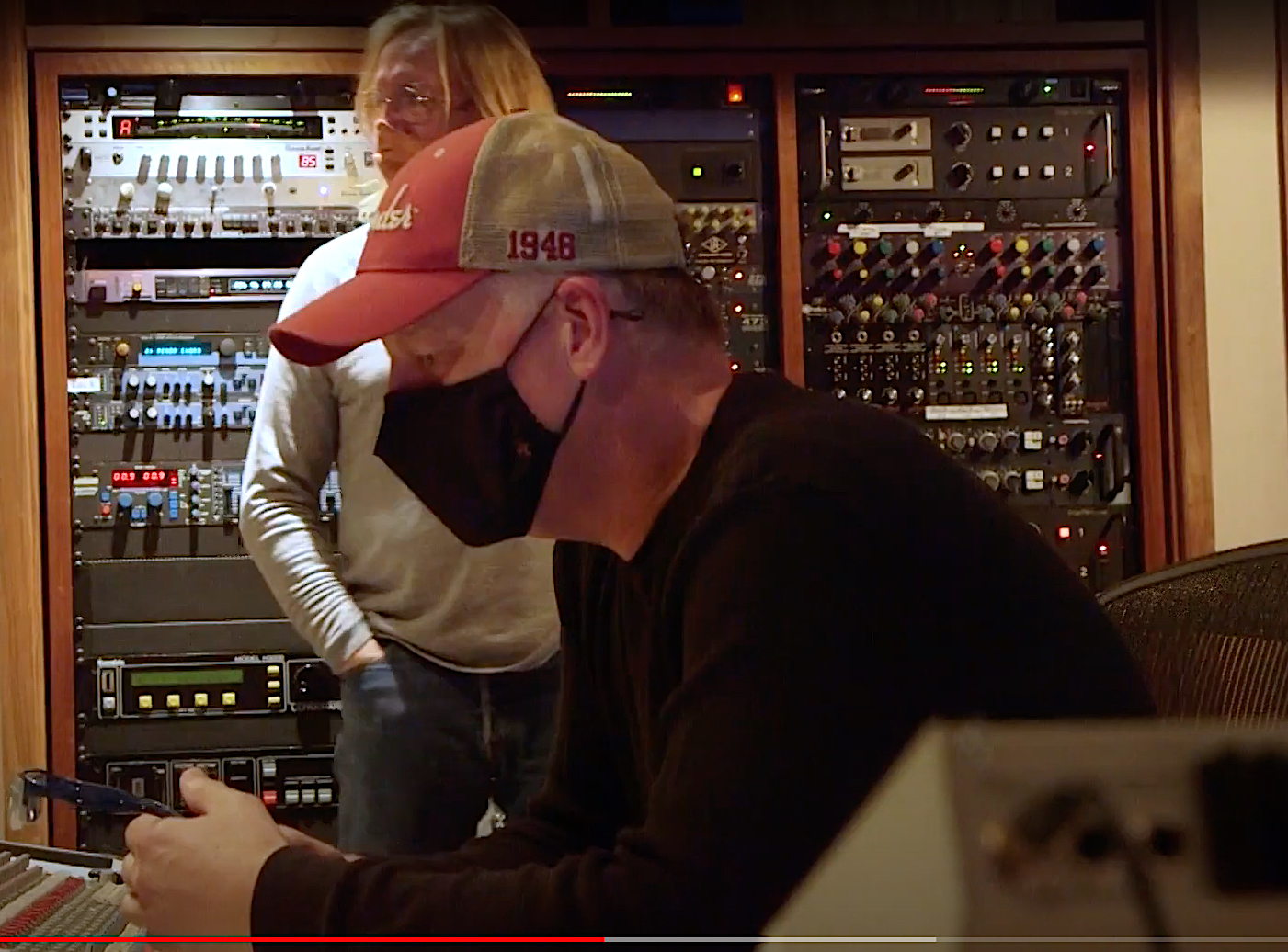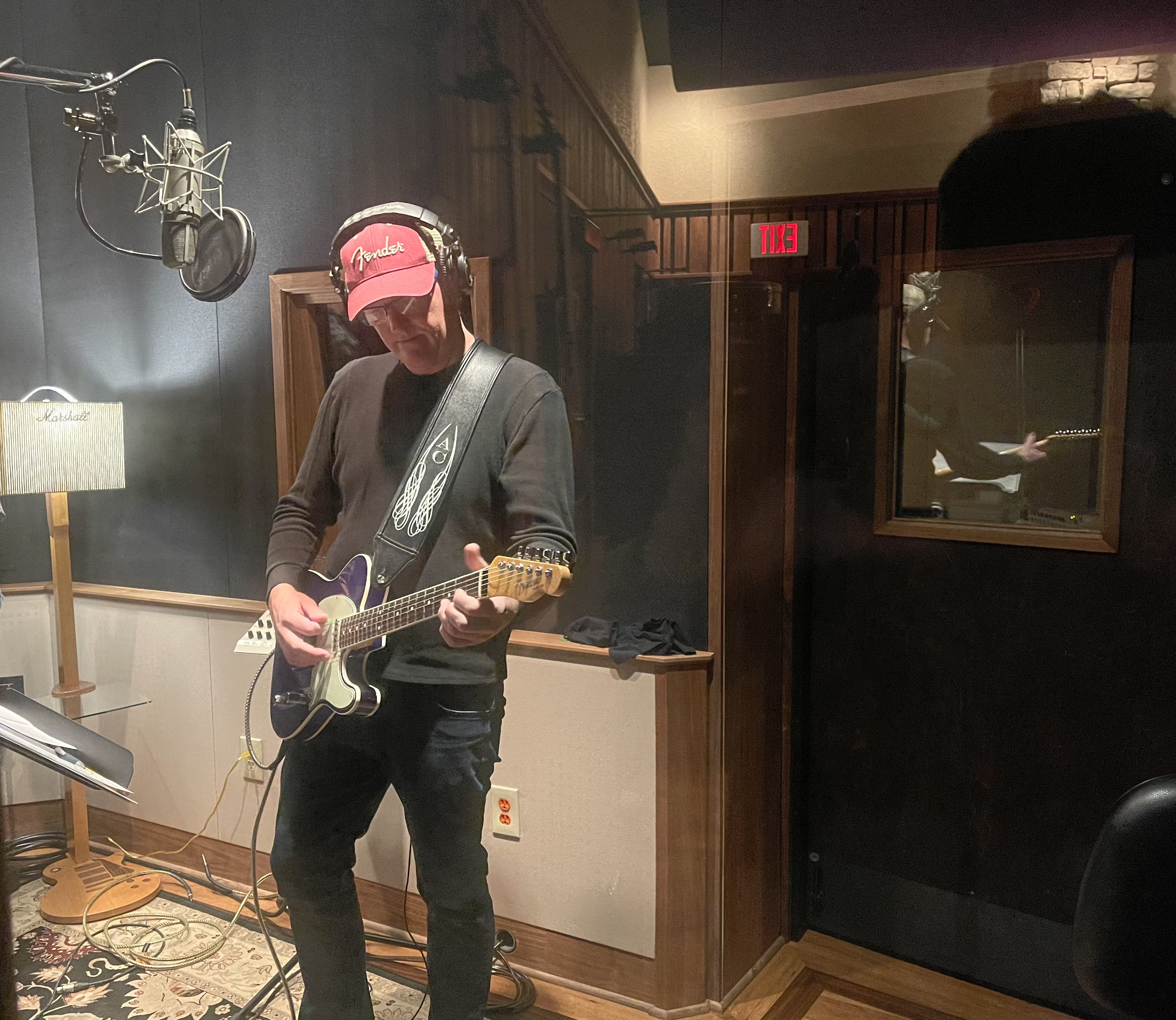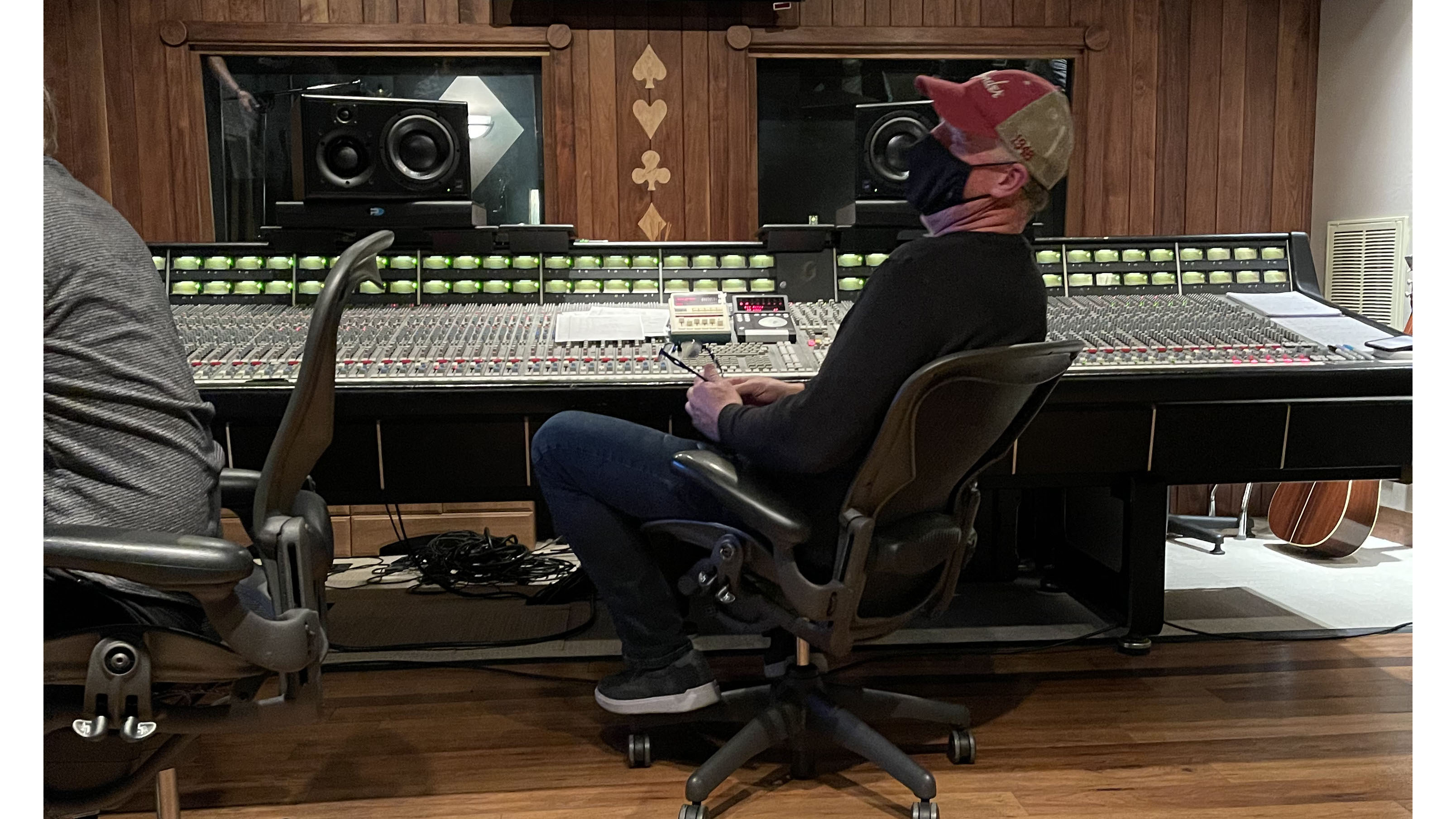Multiple Grammy, CMA, and ACM-award-winning producer/engineer Chuck Ainlay has recorded and/or mixed well over 300 albums, including work with legendary and current artists such as George Strait, Taylor Swift, Miranda Lambert, Peter Frampton, Mark Knopfler, Lee Ann Womack, Steve Earle, Lyle Lovett, Emmylou Harris, The Chicks, and more. Recently he worked on the latest studio album TEN from acclaimed bluesman Albert Cummings, which was released on April 8. Recorded in Nashville at Peter Frampton’s Phenix Studio, the album features a dream team of Nashville’s finest musicians assembled by Ainlay including drummer Greg Morrow, bassist Glenn Worf, keyboardist Michael Rojas, and guitarist Rob McNelley, with a special appearance from legendary artist Vince Gill.
“The first thing that Chuck said to the musicians when we got into the studio was ‘Ok fellas, what we’re here for is to give Albert something he’s never had,’ and man did he do that.” stated Cummings. “The music that started to be played in the studio sounded like it was being created on a whole new level. I knew in a flash we were onto something.”
[DPA Microphones Provide Serious Results For 'Joker Live in Concert']
“Albert had noticed my name and liked the recordings that I had been making,” said Ainlay. “He was thinking about doing another album and wondered if I would be interested. So, we got a conversation going, he sent me some CDs of previous albums, and I was really impressed. I thought that they could be taken up just a notch from there, but there was still great guitar playing, singing and songwriting on those records. I just felt like there was maybe a bit more finesse in the rhythm section that could have happened, and I knew I could help him get there.”

On TEN, Cummings ventures into rock, country, soul, and Americana, while his songs range from wall-ratting tunes to soft ballads, with Cummings’ rugged, world-wise vocals hitting all the right moods. Musically diverse and emotionally cohesive, TEN’s 13 original tracks stand as a compelling statement about who he is now and where he may be headed.
“I chose Peter Frampton’s Phenix Studio to cut the tracks and mix the album, as the studio is blessed with everything you’d need from a technical standpoint, along with great sonics and a great vibe,” stated Ainlay. “It seemed like the perfect place to do this album, since it wasn't super large band. Plus, Albert being a guitar player, he really was thrilled with the idea of being in Peter Frampton’s studio.”
[Get Inside the Mix: Q&A with Expert Mixer Veronica Ferraro]
Ainlay talked about how the various songs and players were chosen for the album: “Albert had a large selection of songs he wrote, and he emailed them to me. I listened and then we talked about which ones were probably the better ones, but also what would go together to make a good record. Choosing the songs is a completely collaborative process, but it’s not a Chuck Ainlay record, it’s the artist’s record. I try and approach each record as though I’m helping that artist fulfill their vision. If they don’t have a vision or a complete vision, I try and help them come to terms with what it is that they’re trying to get to. I also wanted to assemble a group of musicians that could help Albert achieve his vision. Listening to the album, it covers a lot of territory. The players had to be capable of doing lots of different styles. And then you’ve got Albert, who is a great player in his own right. I just tried to make Albert the focus, let his vocal and his guitar playing be the main thing that you hear. Everything else is support, but yet in a really big way.”
Cummings and Ainlay had talked about some guest artists that might be on the record. As a big fan of Vince Gill, Cummings wondered if there was any chance Gill would be interested. “He asked me what I thought about that possibility, and I said, ‘Well, Vince is such a good guy, so maybe,’" Ainlay recalled. "I think I reached out to Vince and he said, ‘Just give Albert my number.’”
[Jeff Balding Converts Nashville Studio to Dolby Atmos with Genelec]
Gill ended up lending his vocal talent on the boisterous roadhouse tune “Last Call.” “Albert was over the moon,” stated Ainlay, “Or as he says, having Vince on the record was just another ‘pinch-me’ moment.”
“I think putting a great supporting cast around Albert was the way to go. The one thing that really attracted me to Albert, as an artist, is that he’s not afraid. He’s not afraid at all – never! He’s not afraid to call me up and ask me if I’ll produce his next record. He’s not afraid to sing his heart out. He’s not afraid to play his soul out. He puts himself right out there on his shirt sleeve and wears it proud.”
When discussing the actual tracking of the record, Ainlay shared details on the choices of microphones, amplifiers and preamps: “Albert is really into a Fender amp called the Vibro-King, which I was not super-familiar with, and we paired that up with one of Frampton’s Fender Vibroverbs. I miked each amp with a Shure SM57 close to the speaker at a 40-degree angle facing towards the dust cone/center cone. Then beside it, so that you are not getting any phase problems, I used a Royer Labs R-121 Studio Ribbon Microphone, which for a ribbon mic can take a lot of SPLs. Then I used a Royer SF-12 Stereo Ribbon Microphone for room ambience.

"That combination is how I have been miking electric guitars for years, and it works. I ran those through API modules for mic preamps and then straight to the hard-disk recorder. I generally don’t use compression when recording electric guitars. Compression can kill a performance. Obviously Albert has a pedal board, so he would do some compression on his end depending on the track. But I always try to get the sound the guitarist is actually hearing in the room, and that is the sound that ends up on the track. From working with Mark Knopfler over the years, I learned that it’s really about the guitar player, not about me and whatever processing I could do after the fact.”
TEN also features several tracks where the acoustic guitar is the prominent instrument—for instance, “Hard Way” and the haunting “Meet the Man.” “Peter Frampton has a Signature Series Martin, so that’s the guitar that we ended up using," Ainlay continued. "For miking, I blended a Neumann KM 86 Multipattern Condenser Microphone aimed at the F-hole to capture the ‘body’ of the acoustic along with a DPA 4099 Instrument Microphone, which is a goose neck mic with clap. I position it where the neck joins the body to get more of the attack of the instrument.”
[Foo Fighters’ Studio 606 Upgrades Recording Experience with AKG Headphones]
“When it comes to vocals, another thing that I really like is to have the guitar players sing and play at the same time—if they’re capable of doing it, which Albert totally is, as he’s a great live performer,” said Ainlay. “Inevitably the most inspired performance is what goes down live. If you’re not singing, you’re not responding with your guitar playing. Albert’s style relies on his fills in between vocals. So, if he’s not singing, then the fills don’t naturally land in the right place. I encouraged him to approach these songs with that live approach, and it really comes through.”
In addition to guitars, the record features tracks with Mike Rojas on Hammond organ and keys, great horns arranged by Sam Levine (tenor and bari sax) with Roy Agee (trombone) and Steve Patrick (trumpet), and background vocals by Perry Coleman and Vicki Hampton.
[Focusrite Red, RedNet Technology Gives a San Mateo Recording Studio Goosebumps]
The final step in the project was mastering, and Ainlay chose Mike Haynes from Nashville-based Ensõ Mastering. “As a mastering engineer, you should always honor the vision of the mix engineer, and this is especially true when mastering a project mixed by friend and industry icon Chuck Ainlay,” stated Haynes. “Chuck always has a clear picture he’s conveying in his mixes, so my job is to bring that picture forward in the process and create audio for delivery. Albert is both a communicator through his playing and a storyteller through his singing. The music reflects this as energetic, direct and raw while simultaneously sophisticated. My approach to mastering this record was to keep all the energy and liveliness of the mixes, while offering refinements and focusing when needed. It’s easy to destroy the dynamic content of great feeling tracks at the mastering stage, so I was mindful to preserve all of that musicality when finalizing the tracks. I hope everyone who listens to this record feels like they are sitting right in front of Albert.”
Throughout his career, Cummings has strived not to place boundaries on his music, and with TEN, he has raised the bar to a place where anything seems possible. “I have been playing for a lot of years and still find new ways of expressing myself,” Cummings says. “That’s what this album is all about to me. It supports my belief that I can accomplish whatever I set my mind to.”
